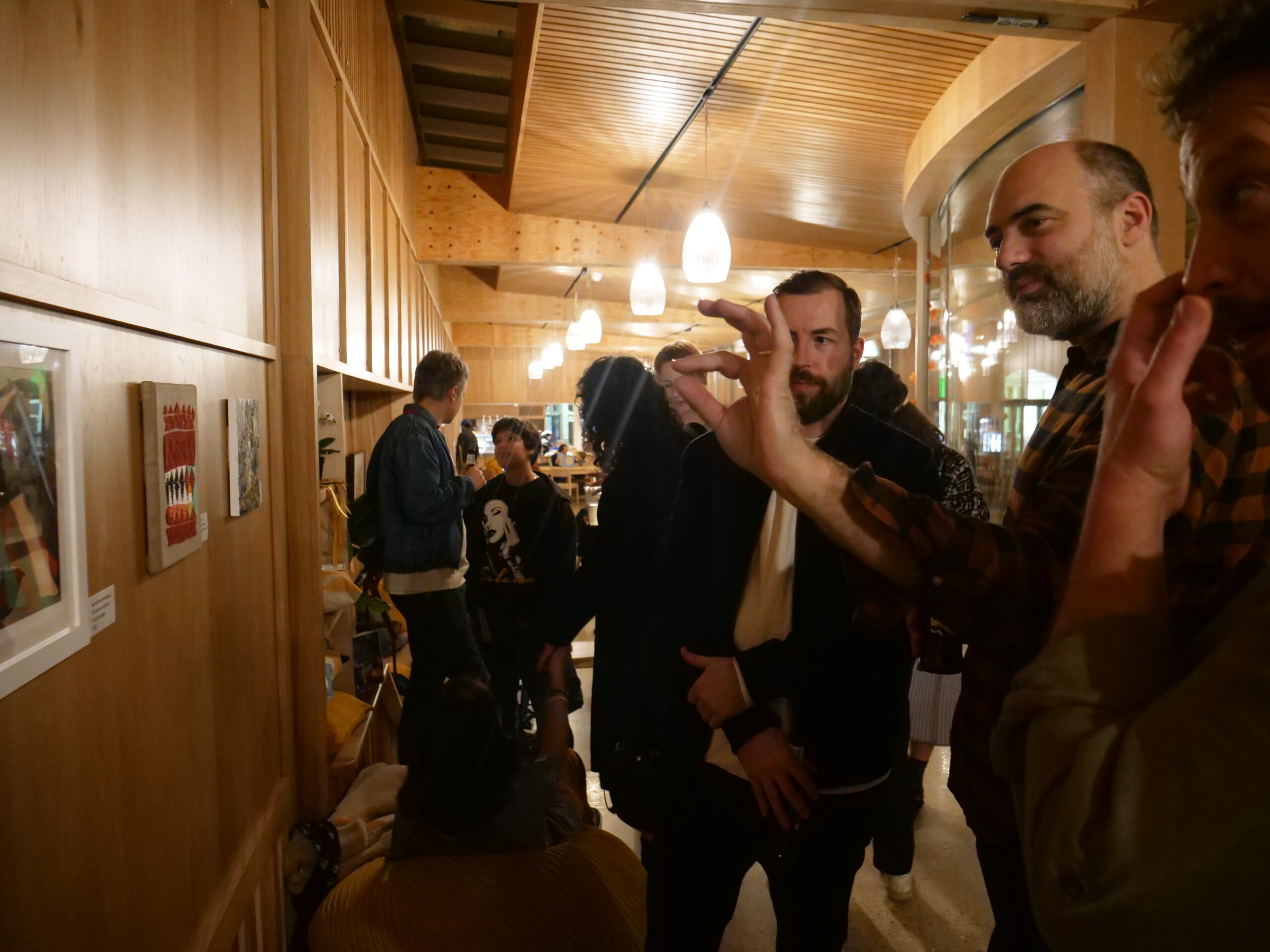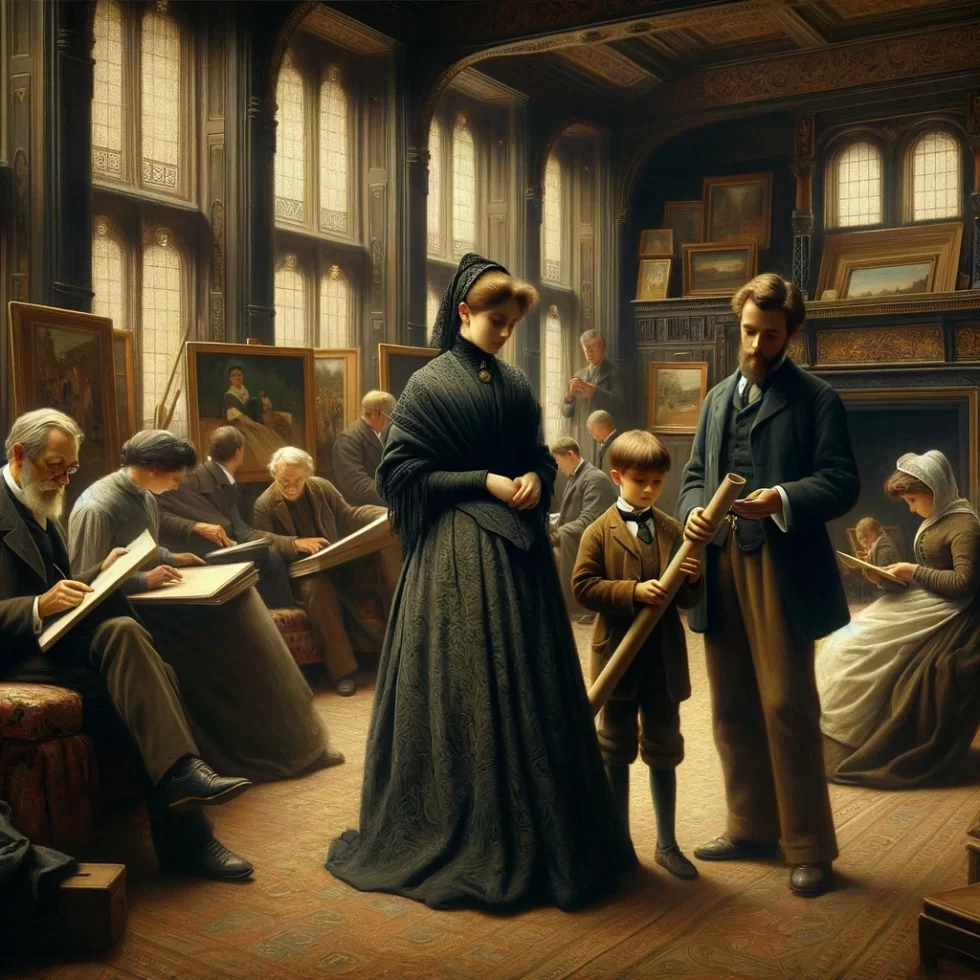
Now you see us
Nameless & Friendless is a painting that’s currently exhibiting at the Now You See Us exhibition at Tate Britain.
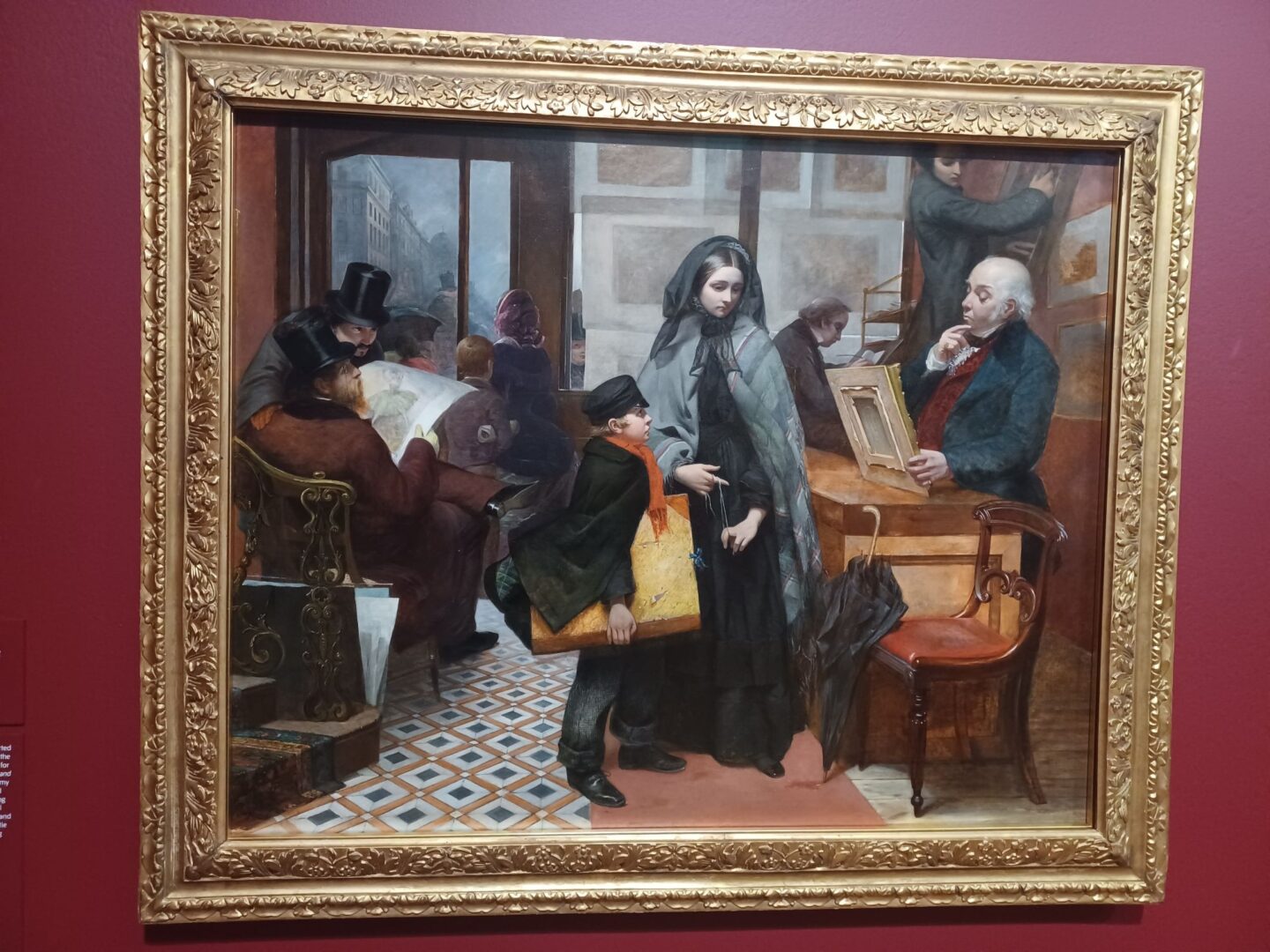
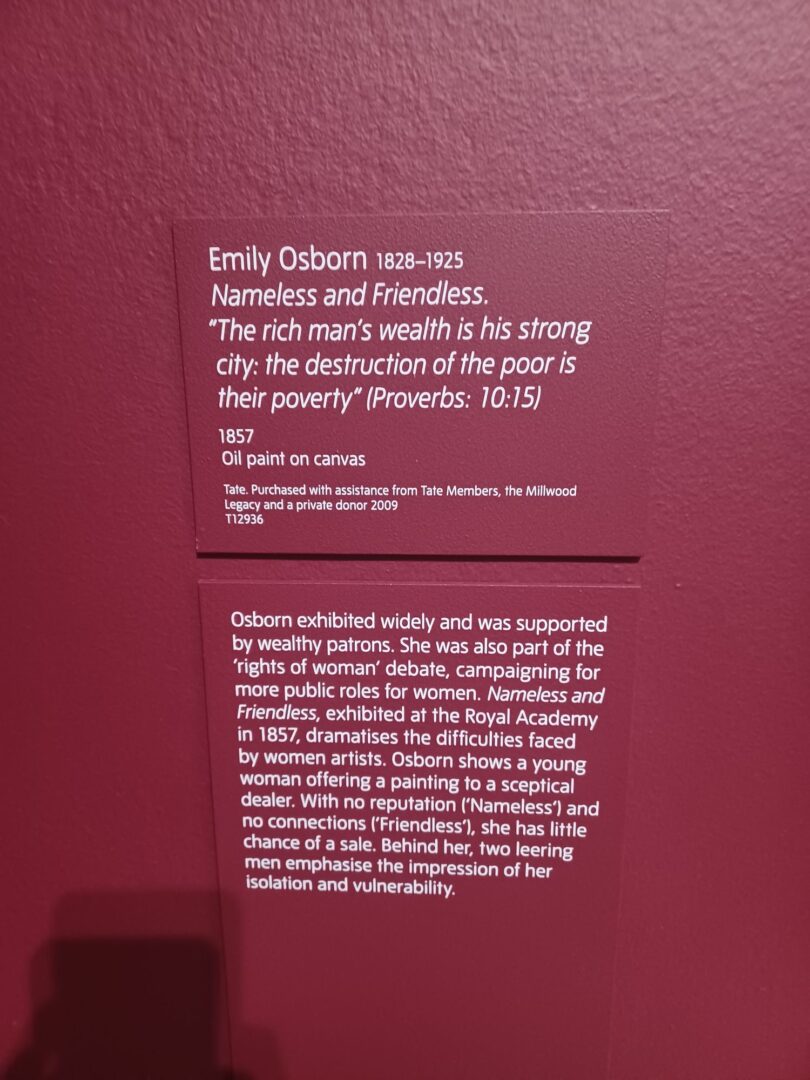
Here Comes The Remix
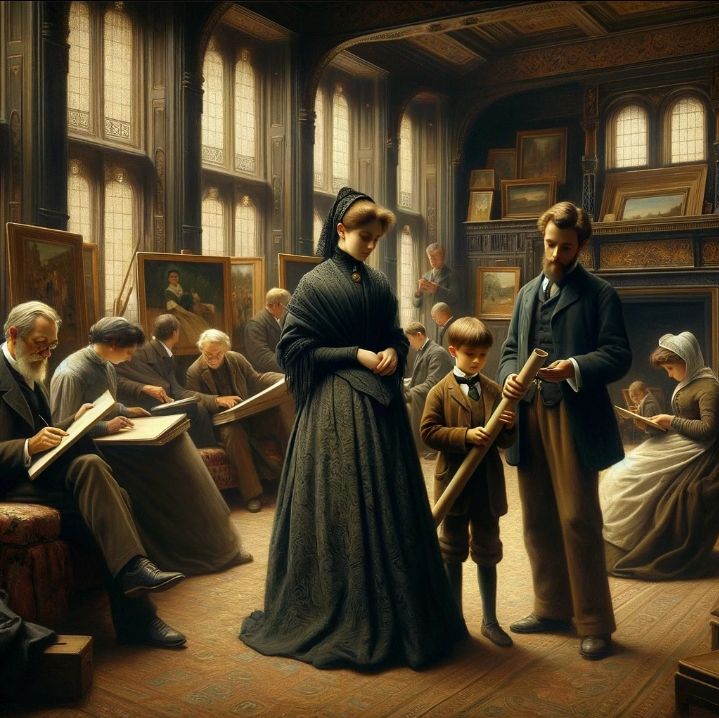
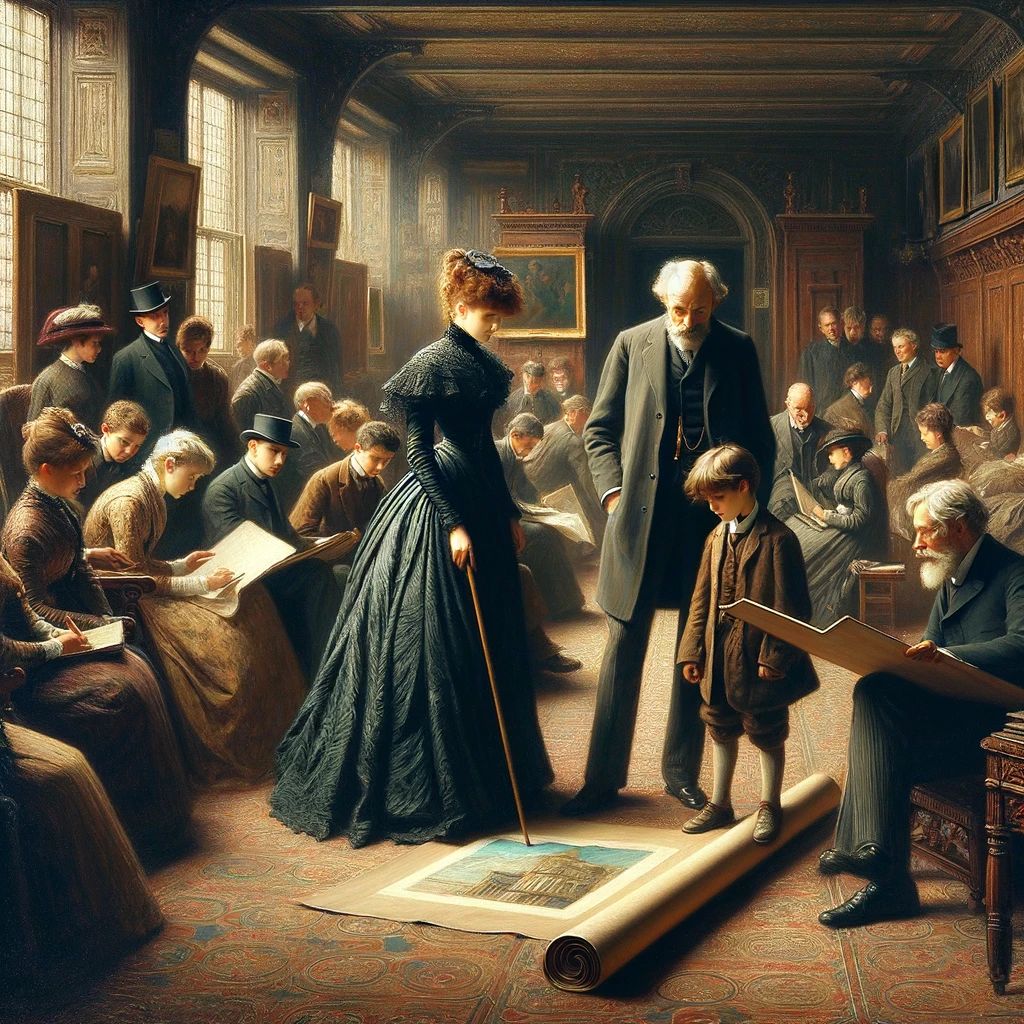
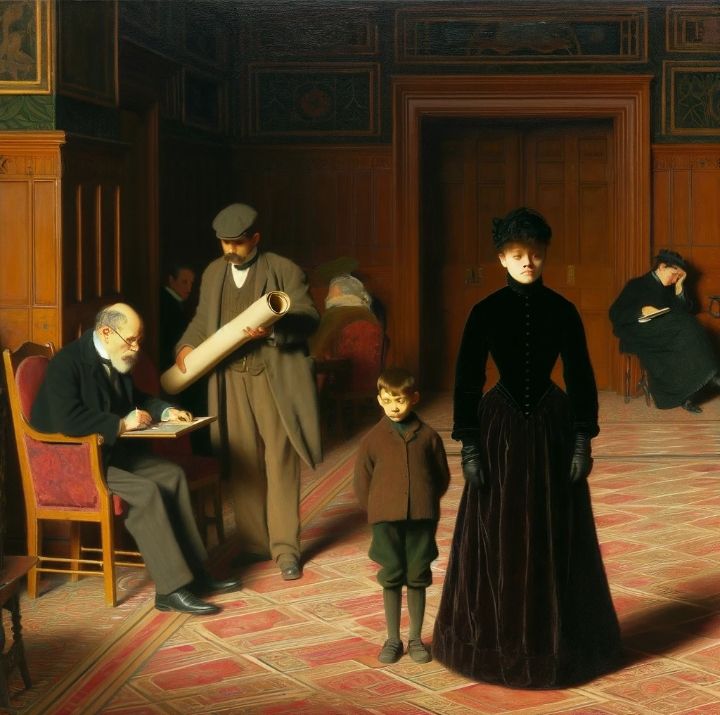
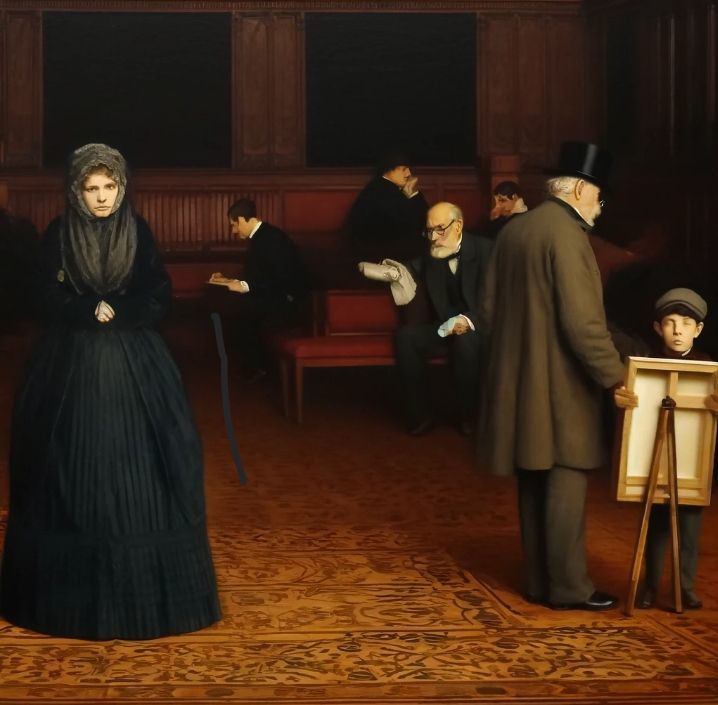
These are all produced by Chat GPT.
Once again it was asked to describe the original painting, and then it was asked to produce more paintings using the same description.
ChatGPT was then asked to write a short story in the style of Anthony Trollope for a Victorian audience.
Trollope’s Take on the Image
In an elegant Edwardian drawing room, the subdued hum of conversation intertwined with the gentle rustling of papers. The room, suffused with an air of scholarly quietude, stood as a sanctuary for those who sought refuge in the arts and letters. Here, amidst the subdued grandeur of its richly adorned walls, stood Mrs. Eleanor Hartley and her young son, Edward. Clad in dark, modest attire, Eleanor’s presence seemed almost spectral, a figure carved from the shadows of grief and perseverance. Her son, with wide, hopeful eyes, clutched a rolled canvas, the legacy of his late father.
They approached an older gentleman, his gaze sharp and critical as he examined the painting Eleanor presented. The man’s disdainful look cut through the air, a palpable rebuke that made Eleanor’s heart sink. This was Mr. Neville, a well-known critic whose opinions could elevate or eviscerate an artist’s career. Eleanor’s late husband had been a painter of considerable talent, yet in death, his works struggled to find the appreciation they deserved.
To their left, a venerable scholar, his beard as white as the paper he perused, was deeply engrossed in a weighty tome. Beside him, a young governess took meticulous notes, her brow furrowed in concentration. They were regular patrons of the gallery, finding in its hallowed halls a sanctuary of intellectual and artistic pursuit. Their presence was a comforting constant in this ever-changing space.
At the back of the room, two portly gentlemen engaged in hushed conversation, their attention momentarily captured by a landscape painting. They were collectors, their eyes always scanning for the hidden gem, the overlooked masterpiece. Nearby, an artist in a paint-splattered smock prepared his easel, his gaze lingering thoughtfully on Eleanor and her son. He sensed a story worth telling, a tableau of sorrow and resolve that transcended the mere transaction of art.
The gallery itself was a testament to the varied tastes and ambitions of its patrons. One wall bore a serene landscape, the soft hues of dawn casting a gentle glow over rolling hills. Another showcased a tumultuous seascape, waves crashing with ferocious intensity against a rocky shore. There were portraits too—solemn visages of nobility and clergy, their eyes following visitors with a timeless gaze. Each piece was a window into another world, a fragment of the artist’s soul captured on canvas.
Mr. Neville’s critique echoed in the room, a harsh litany of faults that seemed to magnify Eleanor’s sense of isolation. Her husband’s art, once a source of pride and comfort, now felt like an anchor, dragging her deeper into the depths of despair. Yet, amidst this personal nadir, a glimmer of kindness emerged. The gallery owner, a man of gentle demeanor and discerning eye, approached with a reassuring smile.
“Mrs. Hartley,” he began, his voice a balm to her frayed nerves, “perhaps you might return later when the gallery is quieter. I assure you, we will give your husband’s work the consideration it deserves.”
Edward’s small hand tightened around his mother’s, a silent plea for hope. As they turned to leave, a young artist, introduced himself as Thomas, stepped forward. His eyes, bright with empathy and determination, met Eleanor’s with an unspoken understanding.
“May I?” he asked, gesturing to Edward’s rolled canvas. With a deft hand, he unrolled the painting, revealing a portrait of Edward. The likeness was striking, capturing not just the boy’s features but his spirit. Thomas’s offer to showcase this portrait alongside his own work was a lifeline, an unexpected act of generosity.
The next day, the gallery buzzed with renewed energy. Thomas’s portrait of Edward, displayed prominently, drew the attention of the portly gentlemen. Moved by the story behind the painting, they purchased several of Eleanor’s late husband’s works.
Eleanor’s eyes filled with tears of gratitude. The kindness of strangers had transformed her despair into hope, her burden into a bridge towards a brighter future. As she and Edward left the gallery, the bonds between them strengthened by the trials they had faced together, their steps were lighter, their hearts buoyed by the promise of better days.
In this small act of compassion, the untold story of Eleanor and Edward found its resolution. Their lives, marked by loss and hardship, now shimmered with the possibility of new beginnings. The gallery’s patrons, though unaware of the full tale, had played their part in a narrative of redemption and renewal, echoing the timeless truths of human kindness and resilience.



